-
twentytwentyone have long admired the work of John Tree and the designs created by the New Zealand based design company Resident. Fortunately we are among the first in the world to offer the simple pared-back Jiro swivel chair, made with minimum components yet still offering ergonomic comfort.
The designer's attention to detail has created a versatile chair that seamlessly fits into any environment. This of course has been extremely relevant in 2020 when so many of us have been working from home.
John has shared development sketches, movies and images, plus answered questions to illustrate the deep thinking and intensive development work behind the products that we feel privileged to offer through our stores.
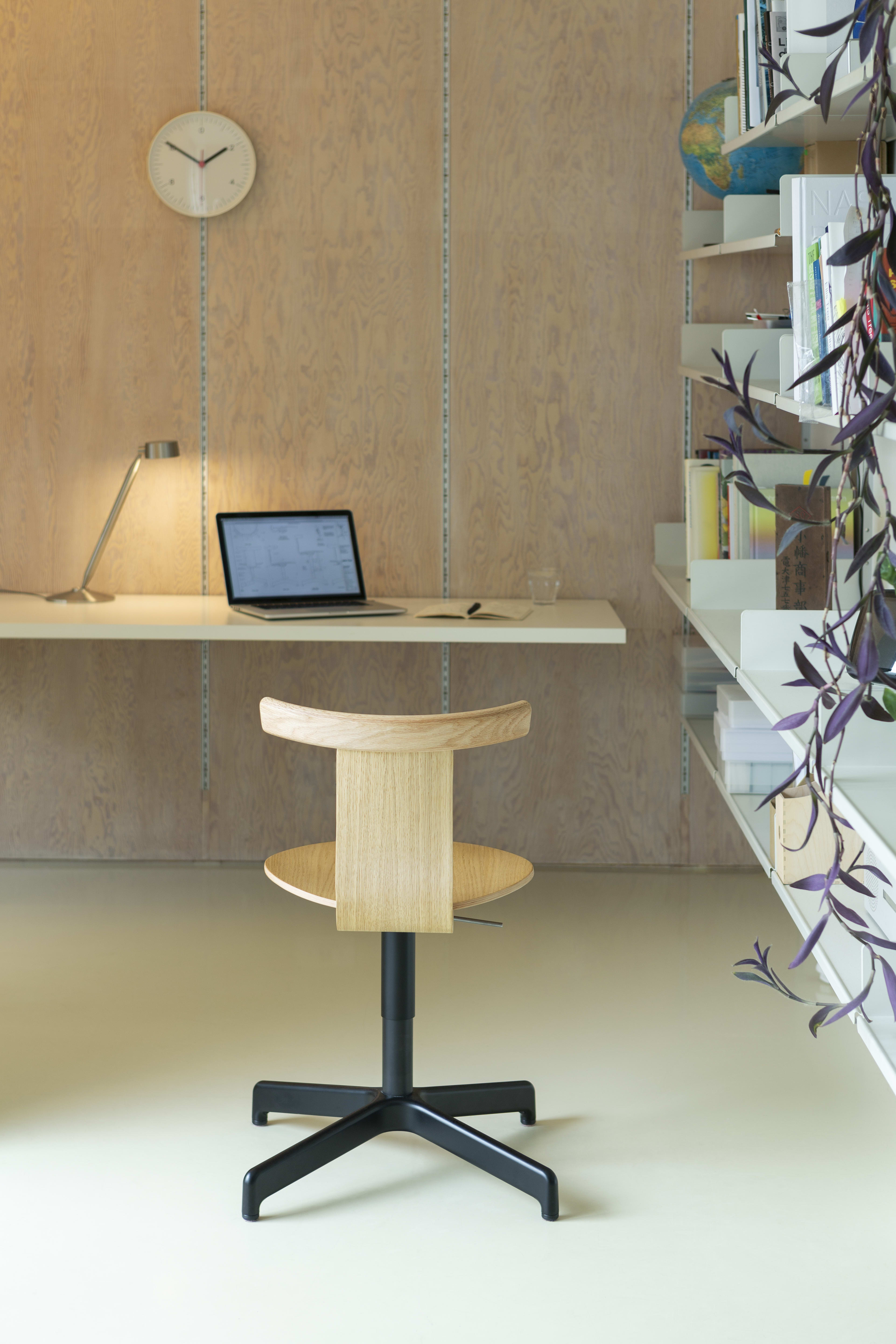
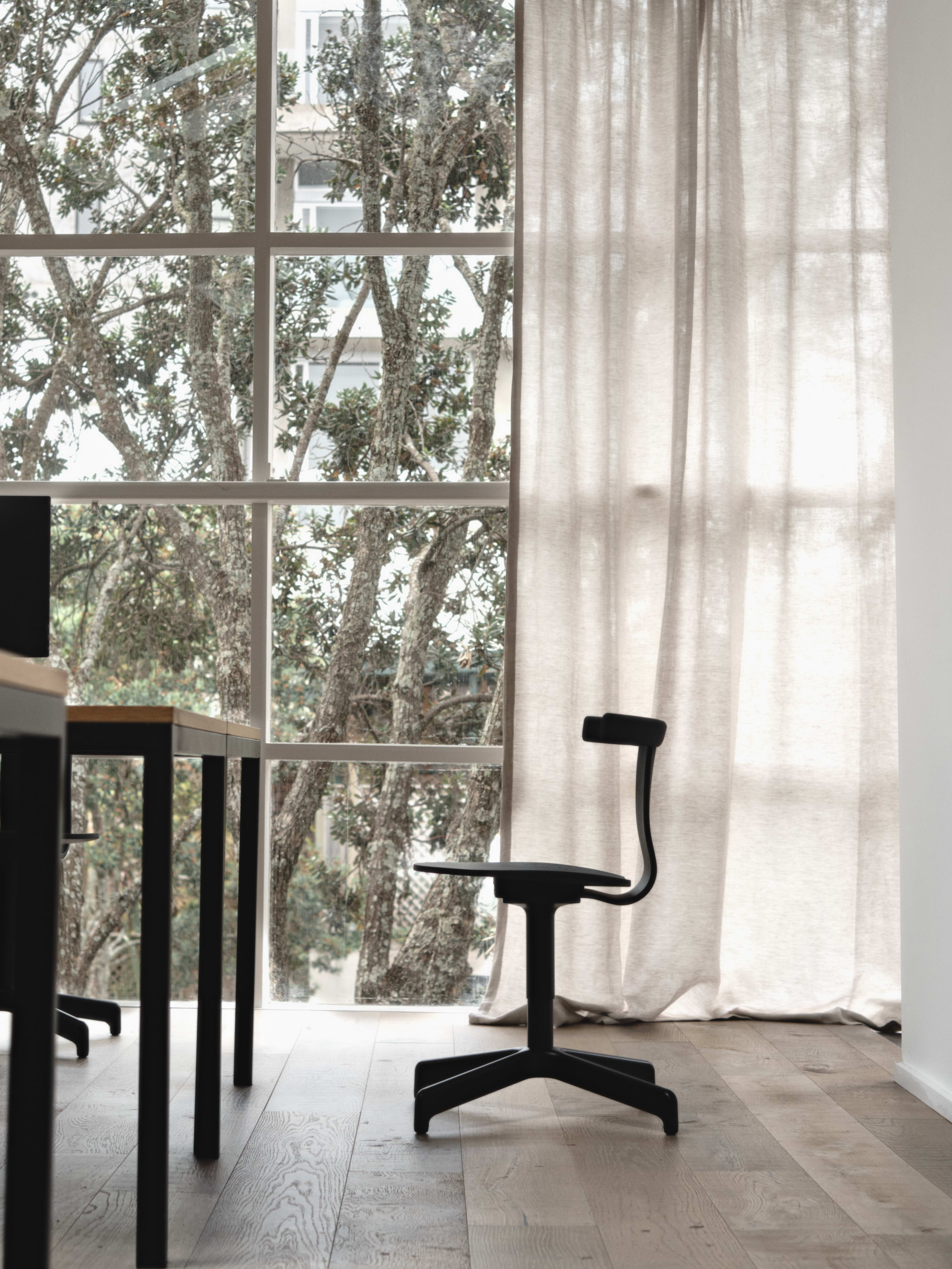
-
Q&A
twentytwentyone have known and worked with John Tree for many years, though in most cases his design work and project management has been through his role with Jasper Morrison.
Jiro offers an opportunity to learn a little more about John as an individual.
20/21 Next year will be twenty years with Jasper Morrison for you John, but your own output began a few years ago. Is it that as a designer your individual creativity has always been an underlying urge?
John Tree I was a Senior designer at Sony prior to joining Jasper's office so although I had products on the market, furniture was something I had no experience with but a great deal of interest in. So it's been great to scratch that itch a little and try my hand, I am enjoying exploring and learning in what is a relatively new category for me. Chairs are certainly not easy but having worked with Jasper for some time I have been able to watch a master at work!
20/21 Do you naturally find a design language that distinguishes your work and does working alone provide a kind of new freedom? Or is the challenge to find solutions the same process?
JT Rather than try and develop and apply a design language to projects I find it more interesting to let each project lead itself and treat my role as some sort of navigator to guide the piece towards naturally suitable forms and processes. In the hope that this leads to lasting designs that are about solutions rather than style.
20/21 You have experience across so many fields, do you have a wish list of projects you'd like to work on - technology, seating, lighting?
JT The possibilities that new technologies offer are always exciting to shape. But the hardware side of these projects often tends to be short-lived and quickly outdated which seems wasteful of both the resources and the design effort involved. So items that have longevity with a more static relevance and utility are of growing interest to me. Furniture is certainly on that end of the spectrum if done right. That along with a client like Resident that shares those beliefs is the dream ticket.
20/21 Jiro was designed with home working in mind, what were your ambitions for the user?
JT Home working has not really evolved beyond simply taking office furniture and placing it in the home. And although the activity may be the same in both locations the context is completely different. Homes are often softer and more intimate places with less dedicated workspace and a great deal of dynamism through the day. From breakfast through to bedtime homes can actually ask a lot more from furniture.
Jiro was about turning current thinking upside down and designing a work chair for the home that would be equally comfortable if it ended up in an office. But during the project we also realised that although people can work from home there is also a lot of "work" that has always occurred at home. Tasks such as sewing, crafts and hobbies, admin and even homework that were often being done on unsuitable dining chairs.

20/21 As regards the evolution to its final form, talk us through your design processes. Do you sketch, make models or use a computer entirely?
JT Sketching is always the initial opening conversation with the problem, but quickly modelling things in 3d soon follows to check ideas in accurate proportions. I sketch on an iPad and find that the sketch/cad model/screenshot/scribble on top cycle occurs a lot.
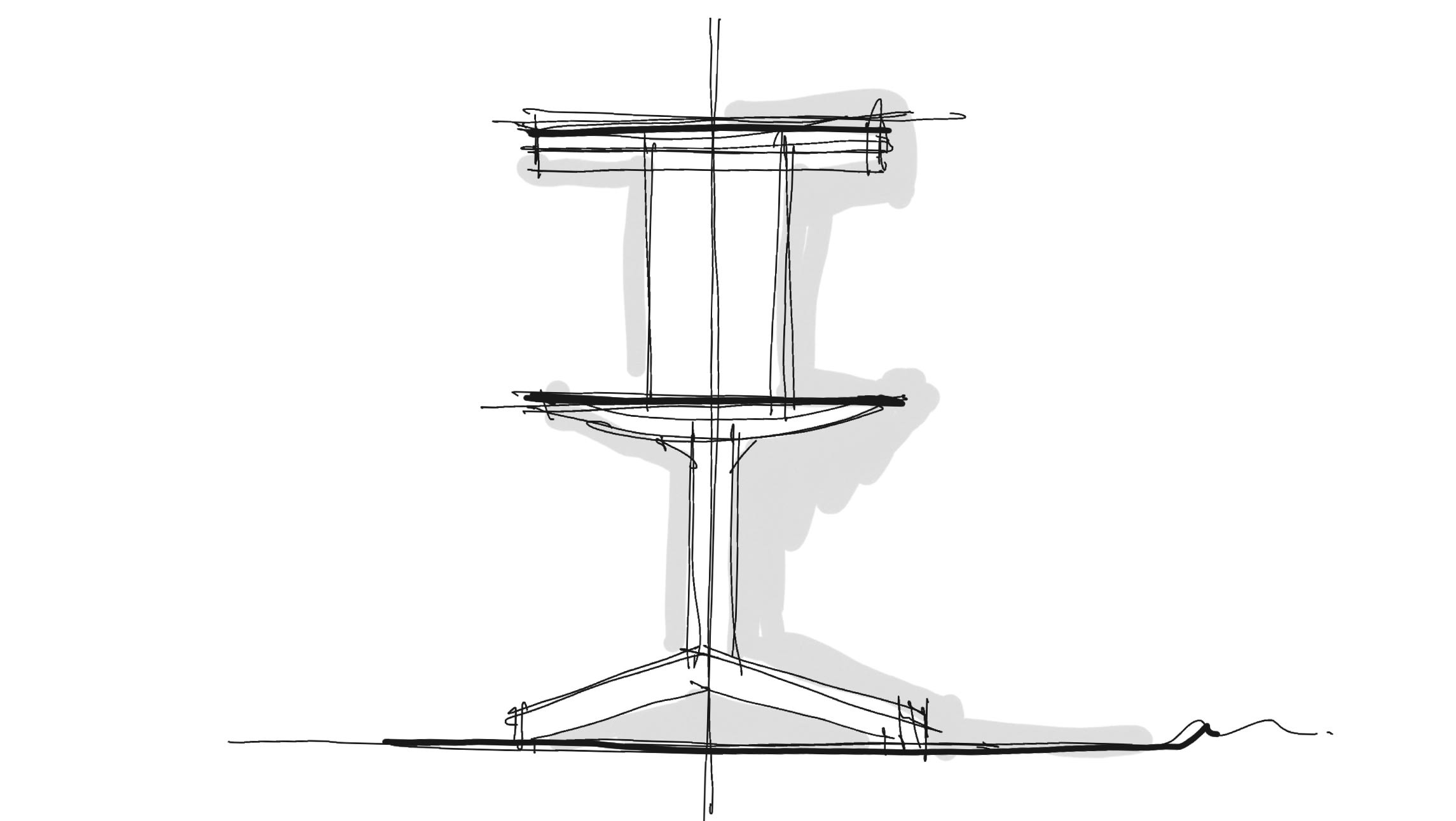
JT But the physical is still super important with both 3d printing and hand made ergonomic rigs being made as and when needed. And importantly sat in for long periods to really get a feel for.
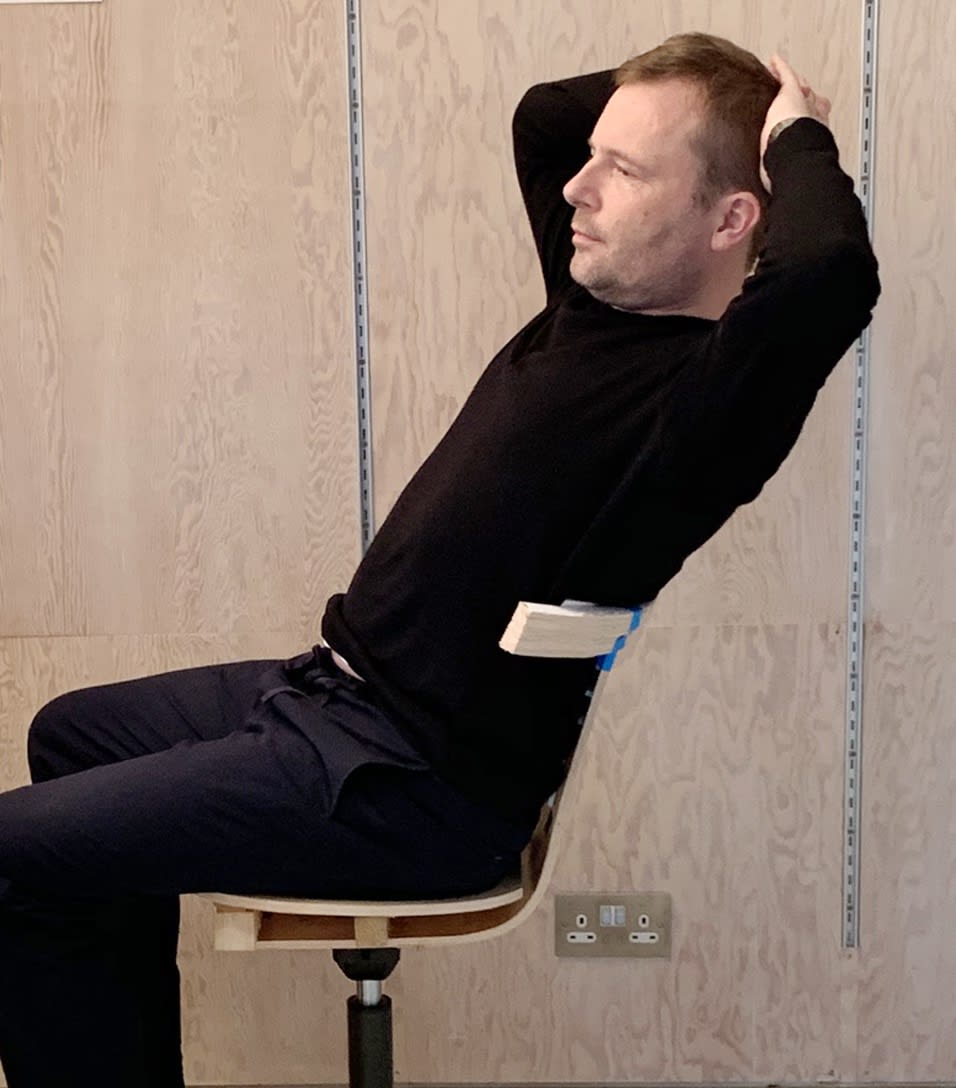
JT The biggest tool is actually passively having a problem in your mind. While there it provides a lens through which you view daily life in a new way and superimpose the problem to reveal solutions.
20/21 Is it important to research historical precedents and contemporary options in task and work seating, or do you try and avoid external influences and remain blinkered?
JT If interested in furniture one can't help but be aware of a lot of the previous work and historical references, but viewing these through the lens of a new approach as we did with home working brings a fresh relevance to missed opportunities and suitable typologies.
20/21 The construction and number of components appears very simple, what were the biggest challenges to realise this?
JT The simplest things are always the hardest as each element has to do a lot of the visual and ergonomic work on its own. So ensuring the visual balance was right without any negative impact on the ergonomics and vice versa was a constant balancing act. There is nowhere to hide with a design as simple as this so even under the seat I was very careful about the design of the die-cast elements under there connecting everything together.
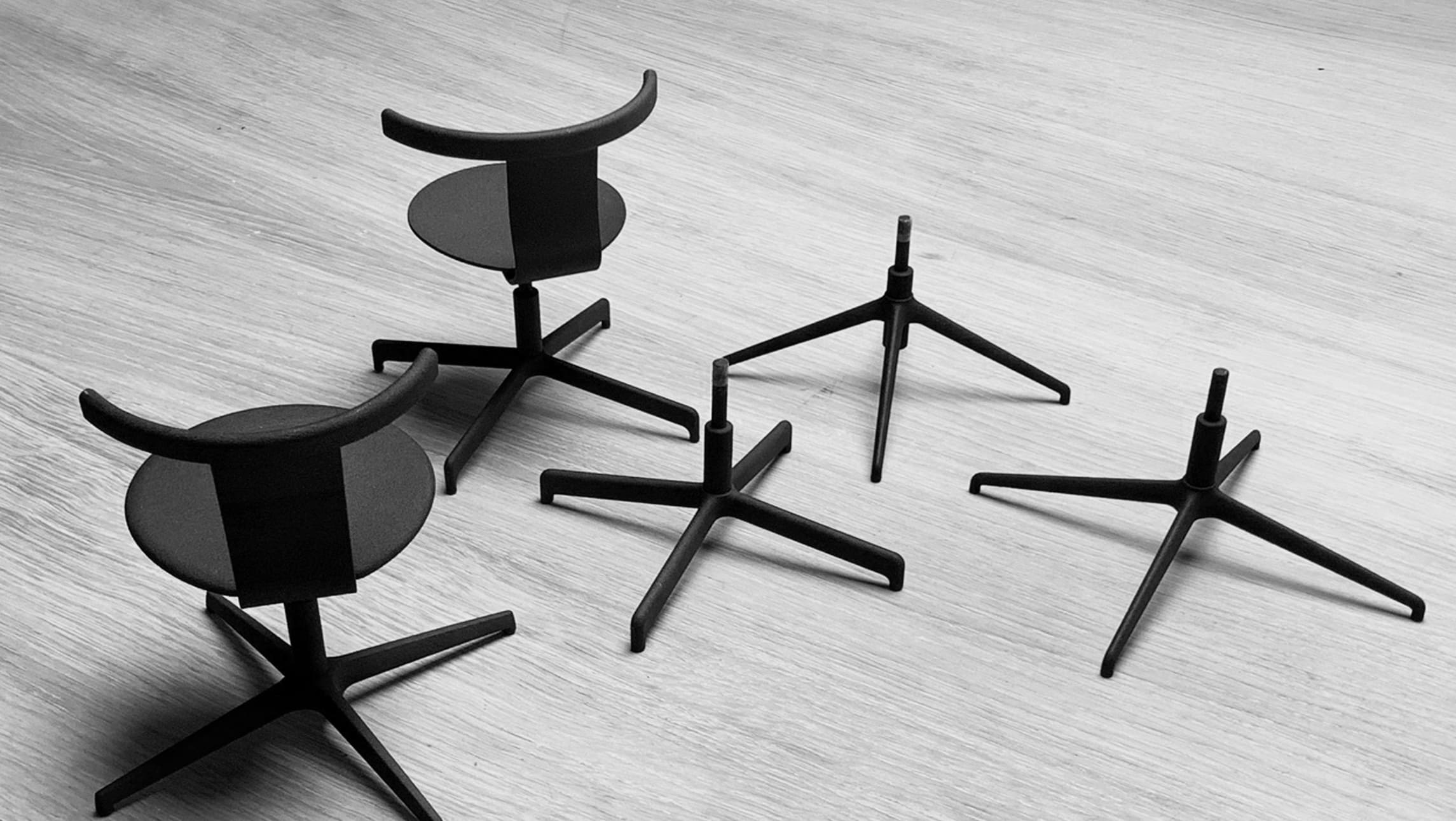
20/21 Why did you feel it was necessary to design your own base when there are many off the shelf bases available?
JT Once you start considering a gas lift option for a seat a world of off the shelf bases becomes apparent. In fact you suddenly realise that even some of the biggest brands have off the shelf bases that you start seeing again and again.
As this chair design was so elemental we quickly realised that if possible, a custom tool would be best. The visual impact of the base was such a big part of the whole story that it would have been wrong not to control that, and Resident were bold enough to agree and go all in.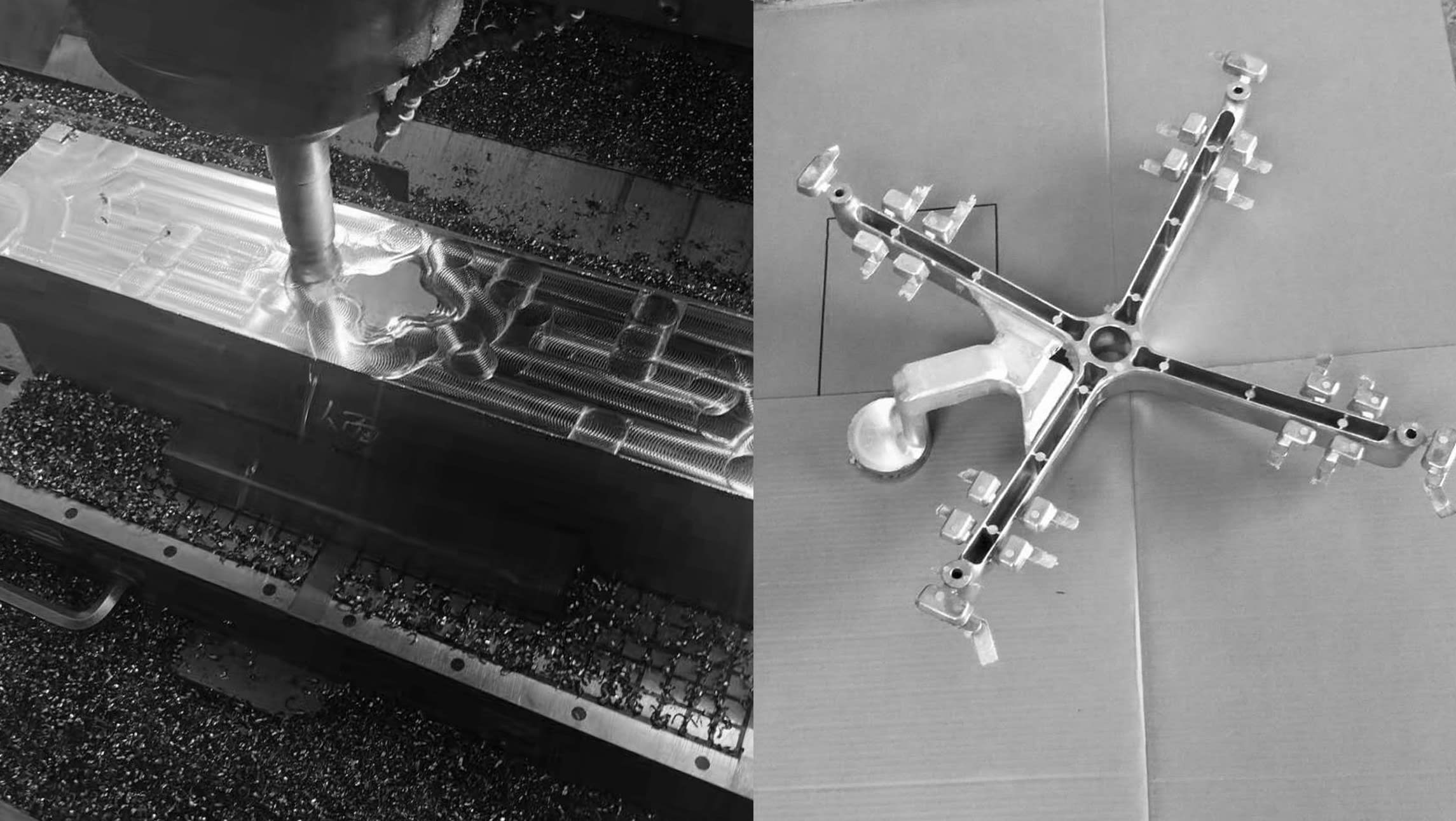
20/21 What informs your selection of materials in the final specification of options?
JT Natural materials with the relevant properties in the correct locations such as ply for flexibility and aluminium for strength led the selection. The finishing is in quite a limited palette as the design is so direct and graphic that too many finishes and materials would dilute the simplicity it has achieved.
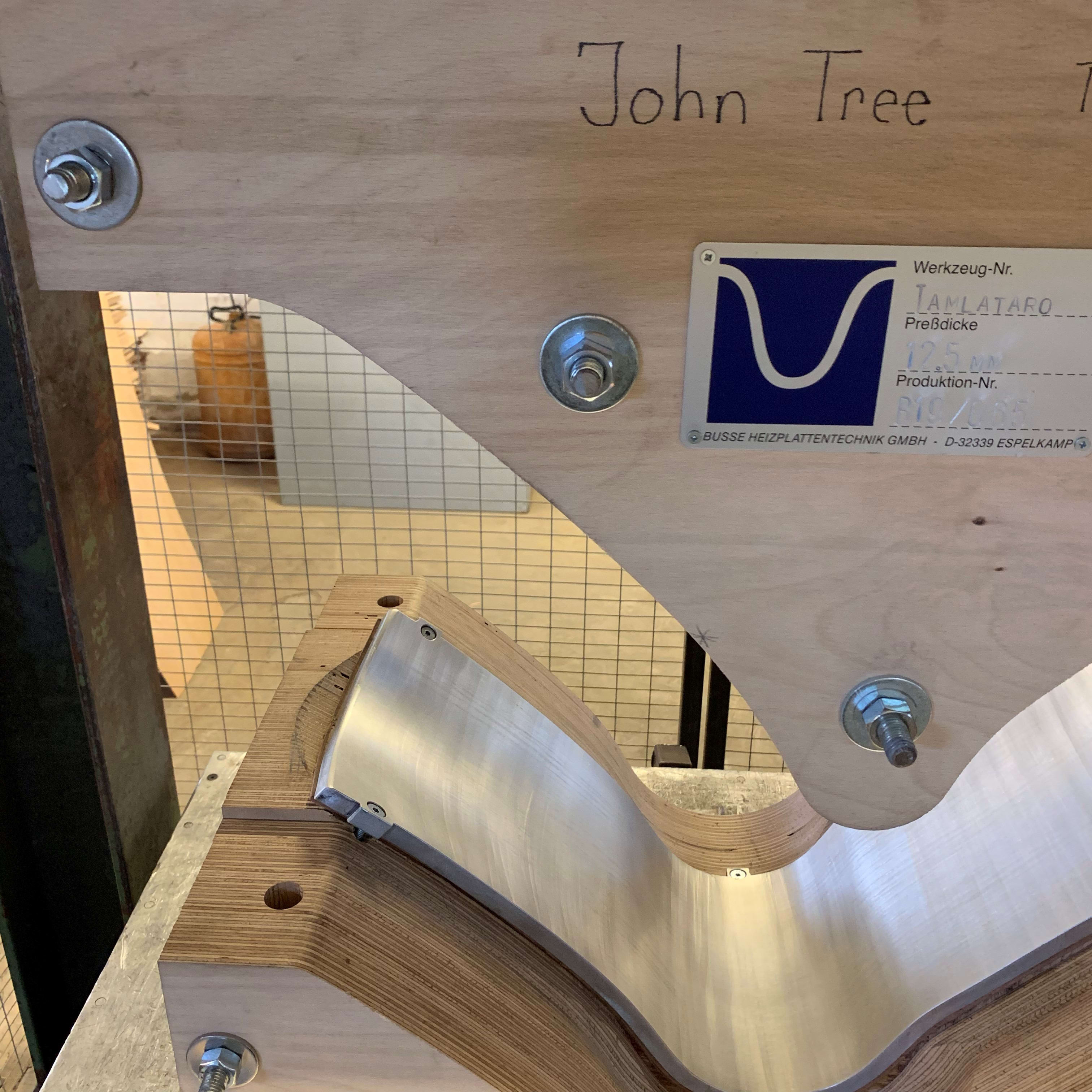
20/21 The Jiro is a small family of chairs, and its applications will appeal to environments beyond the domestic landscape. What kind of office and workplace did you envisage during the design process?
JT As the home is more demanding on the look and flexibility of a work chair it naturally excels in a wide range of traditional contract environments. From both individual workstation seating solutions with casters to boardroom spaces with static bases the range of finishes, flexible upholstery and natural materials were all developed for it to be at home anywhere.
20/21 What's your opinion on the way people will work in the future in light of the pandemic?
JT That is something that we are all wondering about. I think we certainly have identified the key ingredients of flexibility, home working, and offices being more about crossing paths than full time working. The recipe will probably be different in each sector and emerge slowly so adaptability is going to be very important in this transitional period.
20/21 Resident are a relatively young company, based in New Zealand. There will be many positives in working with a dynamic and international company. How collaborative was the process, or were you given a free hand?
JT As with all good brands that understand design it's a combination of constant close communication with freedom and trust. It was truly collaborative while being remote with us being on different sides of the planet. In fact the whole process was fully COVID-compliant before COVID!
20/21 What's next?
JT It's exciting, as I have no idea...
-
Jiro is available to order through twentytwentyone by following the link below.
-
Jiro chair from £520